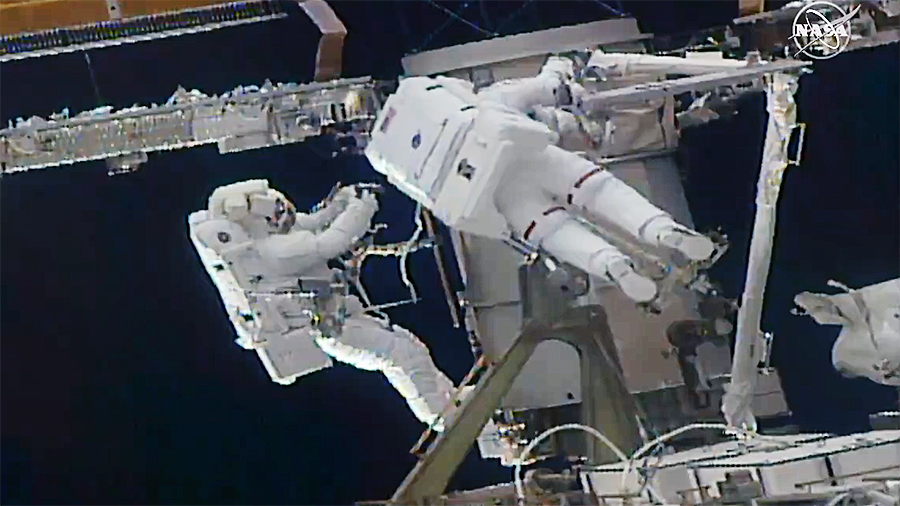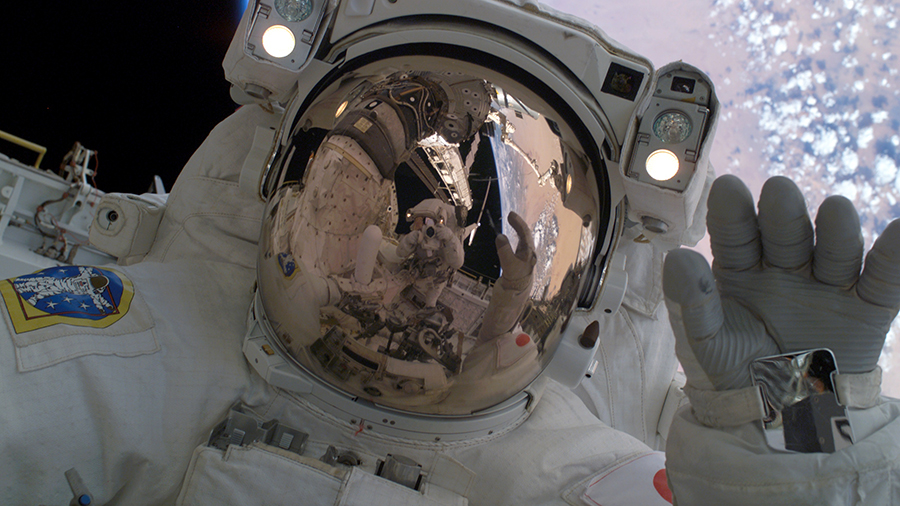
Two astronauts are focusing on preparations for this weekend’s spacewalk as the rest of the Expedition 64 crew keeps up research and maintenance on the International Space Station.
NASA Flight Engineers Victor Glover and Michael Hopkins checked on the U.S. spacesuits today they will wear during a spacewalk scheduled for 7:30 a.m. EST on Saturday. The duo also reviewed the procedures they will use when working on the station’s cooling system and communications gear. NASA TV will begin its live coverage of the spacewalk activities at 6 a.m.
Advanced space science is always ongoing aboard the orbital lab even though the crew may be getting ready for mission events such as spaceship arrivals and departures or spacewalks. Scientists and engineers on Earth use the knowledge gained from the microgravity research observations to improve life for humans on and off the planet.
Veteran station resident Kate Rubins of NASA replaced fuel canisters for a suite of combustion studies exploring fuel efficiency, pollution control and spacecraft fire prevention. NASA astronaut Shannon Walker, on her second station mission, viewed high-quality protein crystals grown for a space commercialization study that could benefit the pharmaceutical and biotechnology industries. Soichi Noguchi of JAXA (Japan Aerospace Exploration Agency) serviced components inside the Kibo laboratory module’s airlock where experiments are staged before exposure to the harsh environment of space.
Roscosmos cosmonauts Sergey Ryzhikov and Sergey Kud-Sverchkov continued work to repair small cracks in the transfer compartment of the Russian Zvezda service module this week. This was part of ongoing work to isolate and fix the source of a slight cabin air leak which is an increase above the standard rate that station teams have been investigating over the past year. At the current rate, the crew is in no danger, and the space station has ample consumables aboard to manage and maintain the nominal environment.
The cosmonauts are applying a second layer of specialized paste to further seal the cracks. On March 12, hatches to the transfer chamber will be closed to enable Russian flight controllers to conduct pressure level checks to analyze the results of the sealing procedures.








